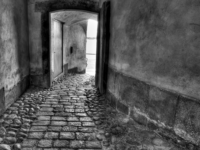Biography of the great mathematician Aryabhatta and important discoveries of Aryabhata
Aryabhata was a great astrologer and mathematician of ancient India. He composed the Aryabhatiya Granth in 499. This book was written about 3600 years after Kalyug. He wrote the book at the age of 23. According to this book, he took his birthplace in Kusumpur, Bihar, the current name is Shaka Samvat 398 in Patna.
According to another belief, Aryabhata was born in Ashmak, Maharashtra. But the truth is that Aryabhatta was born in Kusumpur South in 476 AD, it has been almost proved now. The year of birth of Aryabhatta is clearly written in the Aryabhatiya text, but there has always been controversy about his place of birth.
Some believe that Aryabhata was born in the region between the Narmada and Godavari rivers, that is, in the south. According to a recent study, Aryabhata is said to have been born in Chamravattam, Kerala.
Aryabhata did his higher education at Nalanda University in Kusumpura (Patna). It is possible that Aryabhatta lived there during the Golden Age of India. Historians do not agree with his place of birth. We speak and write Aryabhatta, but his correct name is Aryabhata.
Aryabhata’s Arya-Siddhanta is for astrological and astronomical calculations, which is now extinct. Any information about it can be found in the writings of Brahmagupta, Bhaskara, and other commentators, or the writings of Varahamihira, contemporary of Aryabhata.

The treatise talks about the old Surya Siddhanta, and the use of midnight rather than sunrise is used to calculate the day.
In the book Arya-Siddhanta, astronomical instruments are mentioned, such as cone-machine, cinematographer, angle-measuring device, semicircular and circular, a cylindrical rod, a mechanical device, a chhatra-yantra, two types of water clocks – arched and cylindrical, etc.
There is another treatise, which is in the Arabic language. This book is known as Ntf or Al Nnf. It is noted by the Persian scholar and Indian historian Abu Rehan Al-Biruni. Aryabhata discovered the Sin and Cosine of trigonometry, which is taught all over the world today.
The mathematical part of Aryabhatiya describes arithmetic, algebra, simple trigonometry, and spherical trigonometry. Aryabhata wrote the four grantha Dashagitika, Aryabhatiya, Tantra, and Aryabhata Siddhanta. According to historians, the same book Aryabhatta Siddhanta was written, but there are only 34 verses of this book.
Aryabhatiya of aryabhata, which describes square root, cube root, parallel series, and different types of equations. This book is a collection of astronomy and mathematics. Shlokas written in Aryabhatiya are divided into four parts Gitikapada, Mathamapada, Kalakriapada and Golapada.
1. Gitikapada – There are 13 verses in Gitikapada, Brahma and Parabrahma are worshiped in these verses. In this, cosmology, astrology, trigonometry, and planetary revolutions are presented.
2. Mathamapada- There are 33 verses in the Mathematapada. These verses contain information on arithmetic, algebra, and geometry.
3. Kalakaripada – Kalakaripada has 25 verses. Information about the motion of the planets and the position of the planets is given in these verses. 7 days are presented with the names of the days as weeks.
4. Golapada- Golapada has 50 verses. Golpad contains 50 verses. These verses give information about planetary motions, distance from the sun, solar eclipse, and lunar eclipse due to the size of the earth, day and night. There is information related to astronomy in this shloka.
The Guptakal is also known as Swarna Yuga in the history of India. In the golden age, India had made considerable progress in the fields of literature, art, and science. Moreover, Aryabhata was also the Vice-Chancellor of Nalanda University.
Aryabhata’s astrological principles have had a profound influence on the world. He has written the principles of astrology and the mathematical formulas of astrology in his book. He described the value of pi (π) in mathematics and astronomy with the example that the Earth rotates on its axis.
Aryabhata discovered the things thousands of years ago, where Nicholas Copernicus did from 1473 to 1543 AD. It is written in Golpad, that the earth rotates on its axis. According to Aryabhata, there are 14 manvantaras in 1 kalpa, 72 mahayugas in 1 manvantara and 4 yugas in 1 mahayuga. Therefore, the four Yuga Satyug, Treta, Dwapara, and Kaliyuga are considered equal.
He stated the length of the circumference of the Earth as 39,968.05 kilometers, which is just 0.2 percent less than the actual length of 40,075.01 kilometers.
He said that if the relation of circumference and diameter of any circle comes to 62,832: 20,000, then there is a value up to four decimal places. Measuring Earth’s rotation speed was 23 hours 56 minutes and 4.1 seconds, which is 3 minutes 20 seconds less than today’s time.
According to Aryabhata the length of a year is 365.25868 days. Which is 365.25636 as of today, it is almost equal. According to Aryabhata, it takes 27.32167 days for the moon to revolve around the earth. Which is 27.32166 days as of today. It is almost equal.
Aryabhata has given the formula to find out the time of the solar eclipse and lunar eclipse and how long the eclipse will happen. It is his first time that the Sun is at the center of the Solar System, And the Sun rotates around the rest of the planets in the Solar System. Also, has talked about the distance among the rest of the planets from the Sun.
The whole world respects this great scientist, mathematician, and astrologer of India. India’s first satellite was named Aryabhata in honor of Aryabhata. Aryabhata’s composition also influenced many cultures, such as the Arabic scholar Al-Biruni believed followers of Aryabhata.
The date calculation made by Aryabhata and his disciples is used in Panchang Hinduism today, and the basis of the Islamic world Jalali date was formulated in 1073. Revised in 1925, it is used today as a national calendar in Iran and Afghanistan.


















0 Comments